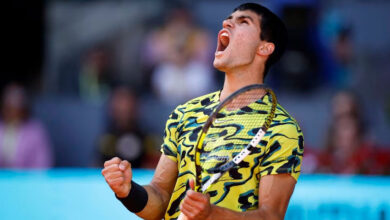FORMULA 1 DRIVERS PENALISED FOR WEAVING ON STRAIGHTS.
What is weaving in F1? Why are drivers penalised by the FIA if they continue to do it? What types of weaving is acceptable?
Strapping yourself into a missile and doing speeds over 150mph while 19 other guys do the same thing at the same time can be rather dangerous.
At times, you will hit something or someone – it’s just part of the job.
But there are rules governing how you can drive in F1 – with one thing that is severely frowned upon being weaving.
What exactly is weaving, when are drivers penalised for doing it and when is it acceptable?
WHAT IS WEAVING IN F1?
Essentially, weaving in F1 means that Driver A will zig-zag across the track, in an attempt to try and keep Driver B behind on a straight so they can’t overtake into the upcoming braking zone.
The general idea is that Driver A hopes his weaving will out Driver B off from even thinking about a move, as Lewis Hamilton did to Vitaly Petrov at the 2010 Malaysian Grand Prix on the pit-straight.
If Driver A were to weave late on the straight, he could cause a big accident with Driver B and some of those behind due to unexpected nature of his actions.
It is why the FIA sometimes hand out warnings, such as the black and white warning flag, or issue penalties if an F1 driver’s weaving is deemed to egregious.
WHEN IS WEAVING ALLOWED?
If Driver A is weaving during an F1 race, he is allowed one move to defend his position.
For example, he is allowed to weave to protect the inside of a corner, and then move back across to take the racing line through the corner.
However, when moving back across he must leave a car width’s – about 2 metres – for Driver B.
Should there be no other drivers around Driver A, he is free to weave, perhaps to get temperature in the brakes or dislodge some debris.
On the formation lap before the race, drivers are allowed to weave as much as they please.
This is because the formation lap is not conducted at race speed, and so speeds are lower, giving drivers more time to react to those cars ahead.
It is incredibly dangerous to do at racing speeds.

